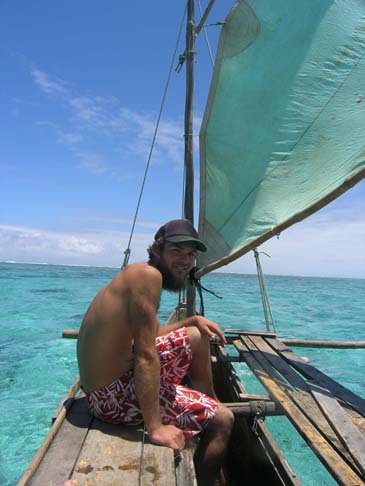Dr. Kyatt Dixon
Post Doctoral Fellow
« Return to Home Page «« Return to Lab Members
 |
Dr. Kyatt DixonPost Doctoral Fellow Growing up in the small southeastern Australian maritime town of Lakes Entrance and spending much of my early life on my fathers fishing boat I gained an early appreciation of the diversity of marine life. I was later introduced to the macroalgae by my PhD supervisor Gerry Kraft and have had a keen interest in the taxonomy and systematics of marine macrophytes, particularly the red algae, ever since. My early studies focused on the algal biodiversity of southeastern Australia and the Vanuatu archipelago, primarily investigating relationships and species-level classification in the crustose red algal order Peyssonneliales. Currently I am working on my first post-doctoral fellowship with Gary and the Saunders lab on Canadian and Australian crustose algae, including the Peyssonneliales, Hildenbrandiales and crustose members of the Gigartinales, assessing current understanding of species and genera using morphology and anatomy as well as DNA barcoding and phylogenetic analyses of various organelle and nuclear markers.
|
SCUBA diving is an important and very enjoyable part of the job, and algal research has taken me to some enviable diving destinations. Leading several trips to various southern islands of Vanuatu was certainly a highlight of my PhD research, the clear warm waters and open, friendly locals making it the quintessential tropical paradise. Around southern Australia diving for algae is at its best, with its incredibly diverse and abundant flora combined with often-perfect conditions and mild waters. Most recently, however, I have been lucky enough to partake in a number of memorable cold-water collecting expeditions around Canada, the finest being on the west coast on Vancouver Island and further north in Haida Gwaii, these trips contributing valuable collections to the Canadian crusts project. “What’s next” I hear you ask. This Australian summer Gary and I will be busy collecting samples from the temperate south coast of Western Australia and the subtropical world heritage listed Lord Howe Island before I continue on to the Philippines to collect some truly tropical algae. Already from our somewhat geographically limited Australian collections we have discovered over 100 undescribed algal species (most yet to be published), including more than quadrupling the known crustose red algal flora, this upcoming trip adding further to what is already a daunting task of describing and naming the new species. |
|